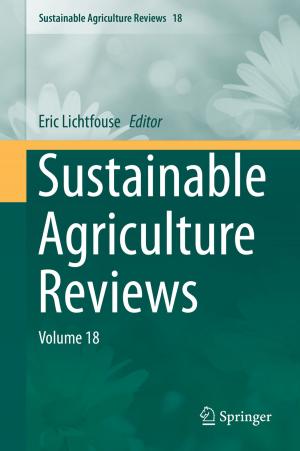Flowering Plants. Monocots
Poaceae
Nonfiction, Science & Nature, Science, Biological Sciences, Botany, Ecology| Author: | Elizabeth A. Kellogg | ISBN: | 9783319153322 |
| Publisher: | Springer International Publishing | Publication: | May 18, 2015 |
| Imprint: | Springer | Language: | English |
| Author: | Elizabeth A. Kellogg |
| ISBN: | 9783319153322 |
| Publisher: | Springer International Publishing |
| Publication: | May 18, 2015 |
| Imprint: | Springer |
| Language: | English |
This volume is the outcome of a modern phylogenetic analysis of the grass family based on multiple sources of data, in particular molecular systematic studies resulting from a concerted effort by researchers worldwide, including the author. In the classification given here grasses are subdivided into 12 subfamilies with 29 tribes and over 700 genera. The keys and descriptions for the taxa above the rank of genus are hierarchical, i.e. they concentrate upon characters which are deemed to be synapomorphic for the lineages and may be applicable only to their early-diverging taxa.
Beyond the treatment of phylogeny and formal taxonomy, the author presents a wide range of information on topics such as the structural characters of grasses, their related functional aspects and particularly corresponding findings from the field of developmental genetics with inclusion of genes and gene products instrumental in the shaping of morphological traits (in which this volume appears unique within this book series); further topics addressed include the contentious time of origin of the family, the emigration of the originally shade-loving grasses out of the forest to form vast grasslands accompanied by the switch of many members to C4 photosynthesis, the impact of herbivores on the silica cycle housed in the grass phytoliths, the reproductive biology of grasses, the domestication of major cereal crops and the affinities of grasses within the newly circumscribed order Poales.
This volume provides a comprehensive overview of existing knowledge on the Poaceae (Gramineae), with major implications in terms of key scientific challenges awaiting future research. It certainly will be of interest both for the grass specialist and also the generalist seeking state-of-the-art information on the diversity of grasses, the most ecologically and economically important of the families of flowering plants.
This volume is the outcome of a modern phylogenetic analysis of the grass family based on multiple sources of data, in particular molecular systematic studies resulting from a concerted effort by researchers worldwide, including the author. In the classification given here grasses are subdivided into 12 subfamilies with 29 tribes and over 700 genera. The keys and descriptions for the taxa above the rank of genus are hierarchical, i.e. they concentrate upon characters which are deemed to be synapomorphic for the lineages and may be applicable only to their early-diverging taxa.
Beyond the treatment of phylogeny and formal taxonomy, the author presents a wide range of information on topics such as the structural characters of grasses, their related functional aspects and particularly corresponding findings from the field of developmental genetics with inclusion of genes and gene products instrumental in the shaping of morphological traits (in which this volume appears unique within this book series); further topics addressed include the contentious time of origin of the family, the emigration of the originally shade-loving grasses out of the forest to form vast grasslands accompanied by the switch of many members to C4 photosynthesis, the impact of herbivores on the silica cycle housed in the grass phytoliths, the reproductive biology of grasses, the domestication of major cereal crops and the affinities of grasses within the newly circumscribed order Poales.
This volume provides a comprehensive overview of existing knowledge on the Poaceae (Gramineae), with major implications in terms of key scientific challenges awaiting future research. It certainly will be of interest both for the grass specialist and also the generalist seeking state-of-the-art information on the diversity of grasses, the most ecologically and economically important of the families of flowering plants.















